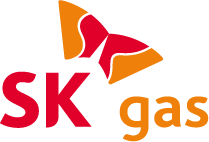| Economic Achievements (GRI 200) |
| Economic Achievement |
201-1 |
Creation and distribution of direct economic value |
70, 81-83 |
| 201-2 |
Financial impact of climate change on an organization's activities and other risks and opportunities |
46-49 |
| Indirect economic effect |
203-1 |
Development and impact of infrastructure investments and support services for the public interest |
56-57, 74-75 |
| 203-2 |
Significant indirect economic effects such as impact and scale |
11 |
| Procurement practices |
204-1 |
Proportion of local purchases in key business areas |
74 |
| Anti-corruption |
205-1 |
Business corruption risk assessment |
77-78 |
| 205-2 |
Notice and training on anti-corruption policy and procedures |
| 205-3 |
Identified corruption cases and actions taken |
| Unfair competition |
206-1 |
Legal measures against unfair trade practices such as anti-competitive acts and monopoly |
79 |
Environmental achievements (GRI 300) |
| Energy |
302-1 |
Internal energy consumption |
67 |
| 302-4 |
Reduce energy consumption |
41, 67 |
| Water and wastewater |
303-1 |
Utilize and exchange shared water resources |
78 |
| 303-2 |
Water release-related impact management |
| 303-3 |
Water intake |
| 303-5 |
Water consumption |
| Biodiversity |
304-1 |
Business that owns, leases, or manages an ecosystem protected area/surrounding area |
49, 74-75 |
| 304-2 |
Impact of business activities, products, services etc. on the ecosystem protected area/surrounding area |
| 304-3 |
Habitat protection or restoration |
| Emission |
305-1 |
Direct GHG emissions (Scope 1) |
67 |
| 305-2 |
Indirect GHG emissions (Scope 2) |
| 305-5 |
Reduce GHG emissions |
| 305-7 |
Nitrogen oxides (NOx), sulfur oxides (SOx) and other major air emissions |
68-69 |
| Waste |
306-1 |
Waste generation and significant waste-related impacts |
69 |
| 306-2 |
Significant waste-related impacts management |
| 306-3 |
Waste generation |
| 306-4 |
Waste recycling |
| 306-5 |
Disposed waste |
| Environmental grievance management system |
307-1 |
Amount of major fines and number of non-monetary sanctions imposed for non-compliance with environmental laws and regulations |
69 |
| Supplier environmental assessment |
308-1 |
Percentage of new suppliers that have been screened for environmental standard assessment |
73-74 |
| Social achievements(GRI 400) |
| Employment |
401-1 |
Number and percentage of newly hired workers |
70 |
| 401-2 |
Welfare benefits provided to full-time workers by major business sites |
64-65, 70-71 |
| 402-3 |
Percentage of return to work and tenure after parental leave by gender |
71 |
| Labor relations |
402-1 |
Minimum notice period for business changes |
80 |
| Occupational safety and health |
403-1 |
Occupational safety and health management system |
71-72 |
| 403-2 |
Hazard identification, risk assessment and accident investigation |
| 403-3 |
Occupational health services |
| 403-4 |
Employee participation, consultation and communication on occupational health and safety |
| 403-5 |
Worker training on occupation safety and health |
| 403-6 |
Promote worker health |
| 403-7 |
Prevention and reduction of occupational safety and health impacts directly linked by management relationships |
| 403-8 |
Workers subject to the occupational safety and health management system |
| 403-9 |
Work-related injuries |
| 403-10 |
Work-related health conditions |
| Training and education |
404-1 |
Average training hours per employee |
71 |
| 404-2 |
Programs to strengthen employee competency and support transition |
61, 65 |
| 404-3 |
Percentage of employees receiving regular performance and career development reviews |
71 |
| Diversity and equal opportunity |
405-1 |
Governance body and employee diversity |
19, 70, 76 |
| 405-2 |
Gender base pay and compensation-related ratio |
70 |
| Human rights assessment |
412-1 |
Worksites subject to human rights and impact assessment |
73 |
| 412-2 |
Employee training on human rights policies and procedures related to business |
| Community |
413-1 |
Percentage of community participation, impact assessment, and operation of development programs |
56-57, 74-75 |
| Supply chain social impact assessment |
414-1 |
New suppliers screened through social impact assessment |
73-74 |
| 414-2 |
Major negative social impacts in the supply chain and actions taken |
| customer safety and health |
416-2 |
Non-compliance with the health and safety impact of products and services |
79 |
| Marketing and labeling |
417-2 |
Violation of laws and regulations related to product/service information and labeling |
79 |
| 417-3 |
Violation of marketing/communication laws |
| Customer information protection |
418-1 |
Number of complaints proven with customer privacy violations and loss of customer information |
33, 72 |
| Compliance with socioeconomic laws |
419-1 |
Violation of laws and regulations in the social and economic sphere |
79 |

